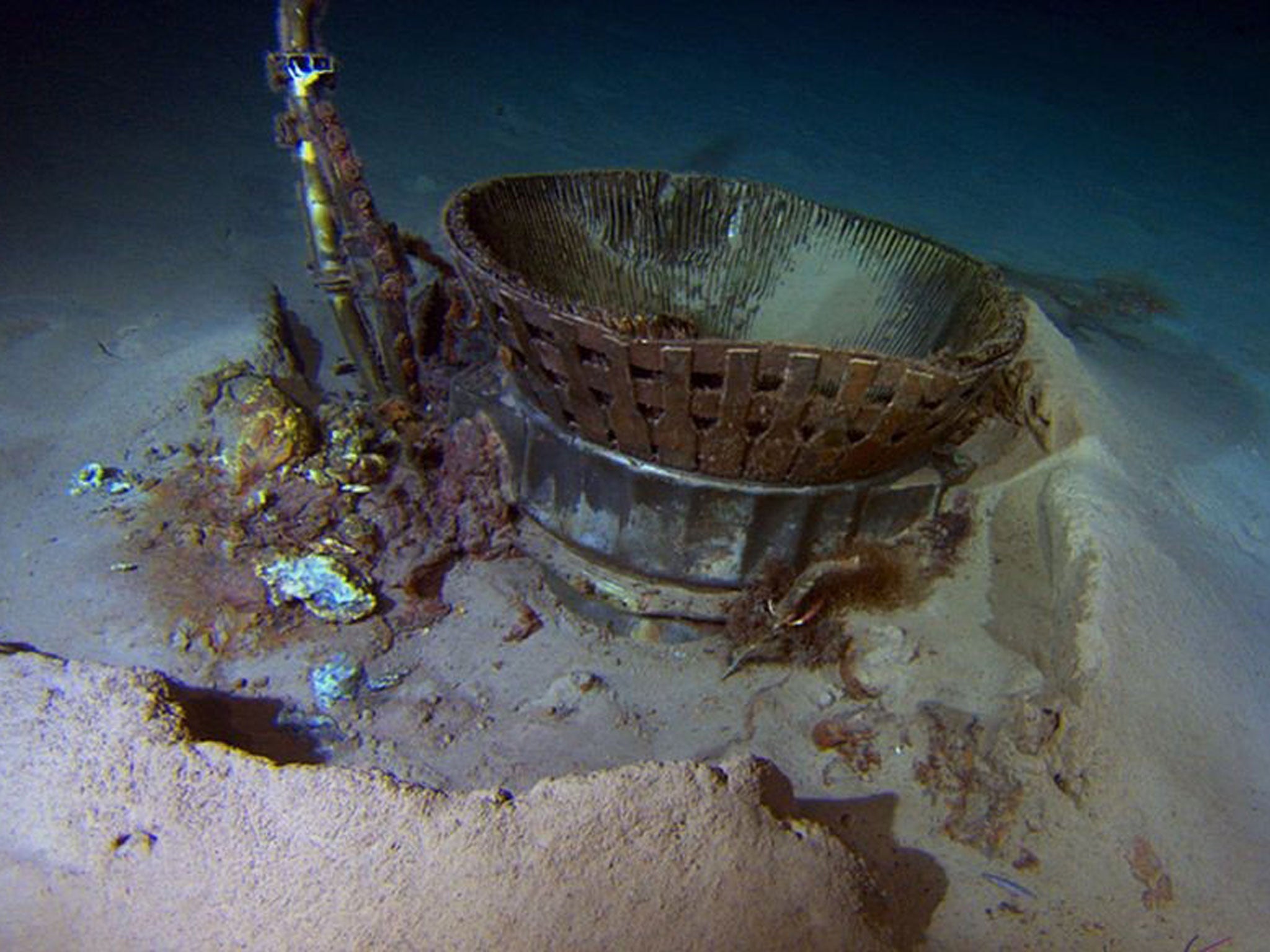Amazon CEO Jeff Bezos recovers Apollo engines from beneath the Atlantic
Bezos, who in 2000 founded Blue Origin, a human spaceflight startup company, led the privately funded expedition to retrieve the F-1 engines

Amazon boss Jeff Bezos and his deep-sea salvage crew have recovered the rusted pieces of two Apollo-era rocket engines that helped boost astronauts to the moon.
Bezos, who in 2000 founded Blue Origin, a human spaceflight startup company, led the privately funded expedition to retrieve the twisted F-1 engines.
The expedition raised the main engine parts during three weeks at sea before heading back to Cape Canaveral, Florida, the launch pad for the manned lunar missions.
In a statement, Nasa Administrator Charles Bolden called the recovery "a historic find."
Mr Bezos, who announced his intention to retrieve the rockets from the landmark Apollo missions a year ago, wrote in a blog post: "We've seen an underwater wonderland — an incredible sculpture garden of twisted F-1 engines that tells the story of a fiery and violent end."
The underwater salvage team used sonar to spot the sunken engines, which were found resting nearly 3 miles beneath the Atlantic and 360 miles (579 kilometers) from Cape Canaveral.
At the time, the Internet mogul said the artifacts were part of the Apollo 11 mission that gave the world "one small step for man, one giant leap for mankind."
He has since said it is unclear whether they were from the Apollo 11 launch.
The 18.5ft by 12.2ft rockets which each weighed 8,166 kilograms, are the most powerful ever built and were part of the first stage of the Saturn launch system.
They fired for just 165 seconds during the launch, but lifted the rocket 67 miles before falling to the ocean as designed, with no plans to retrieve them.
Mr Bezos, who has well-known fascination with space travel, now plans to restore the engine parts, which included a nozzle, turbine, thrust chamber and heat exchanger.
Amazon.com Inc. spokesman Drew Herdener declined yesterday to tell Associated Press the cost of the recovery or restoration.
Nasa has previously said an engine would head for the Smithsonian Institution's National Air and Space Museum.
If a second was recovered, it would be displayed at the Museum of Flight in Seattle, where Amazon.com is based.
The ocean floor off Cape Canaveral is strewn with jettisoned rockets and flight parts from missions since the beginning of the Space Age.
What survived after plunging into the ocean is unknown.
Previously Mr Bezos wrote he was inspired by Nasa as a child, and by recovering the engines "maybe we can inspire a few more youth to invent and explore."
Join our commenting forum
Join thought-provoking conversations, follow other Independent readers and see their replies
Comments